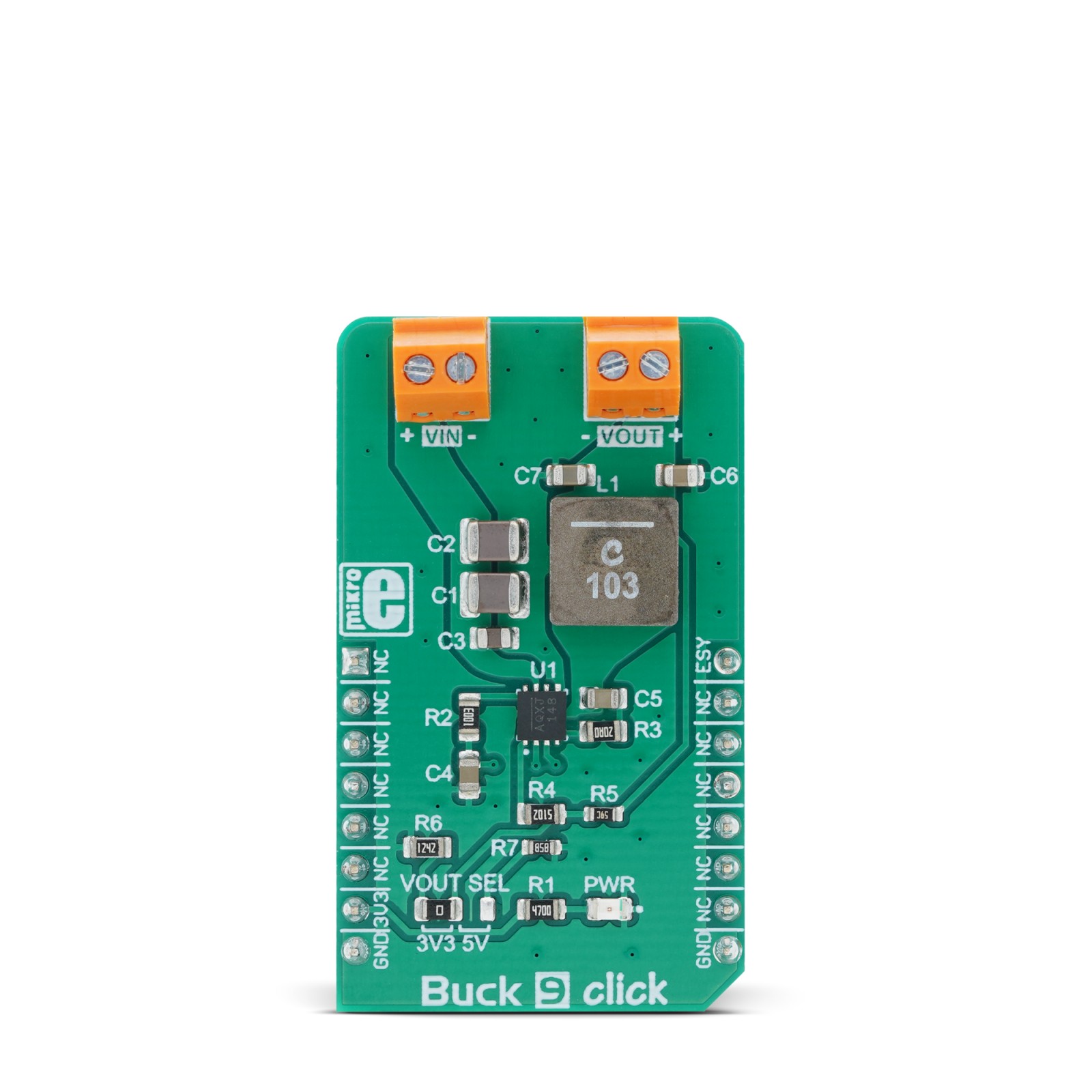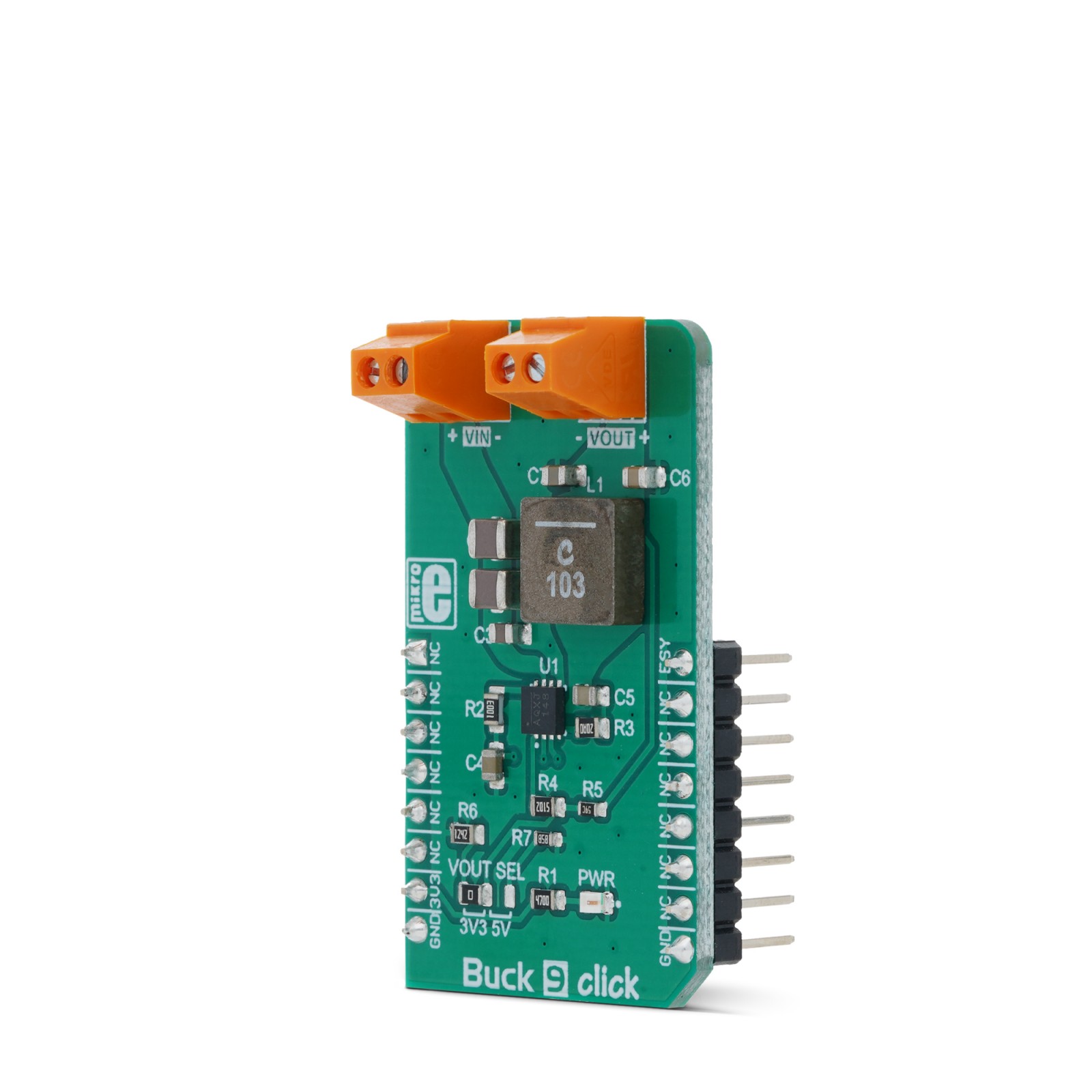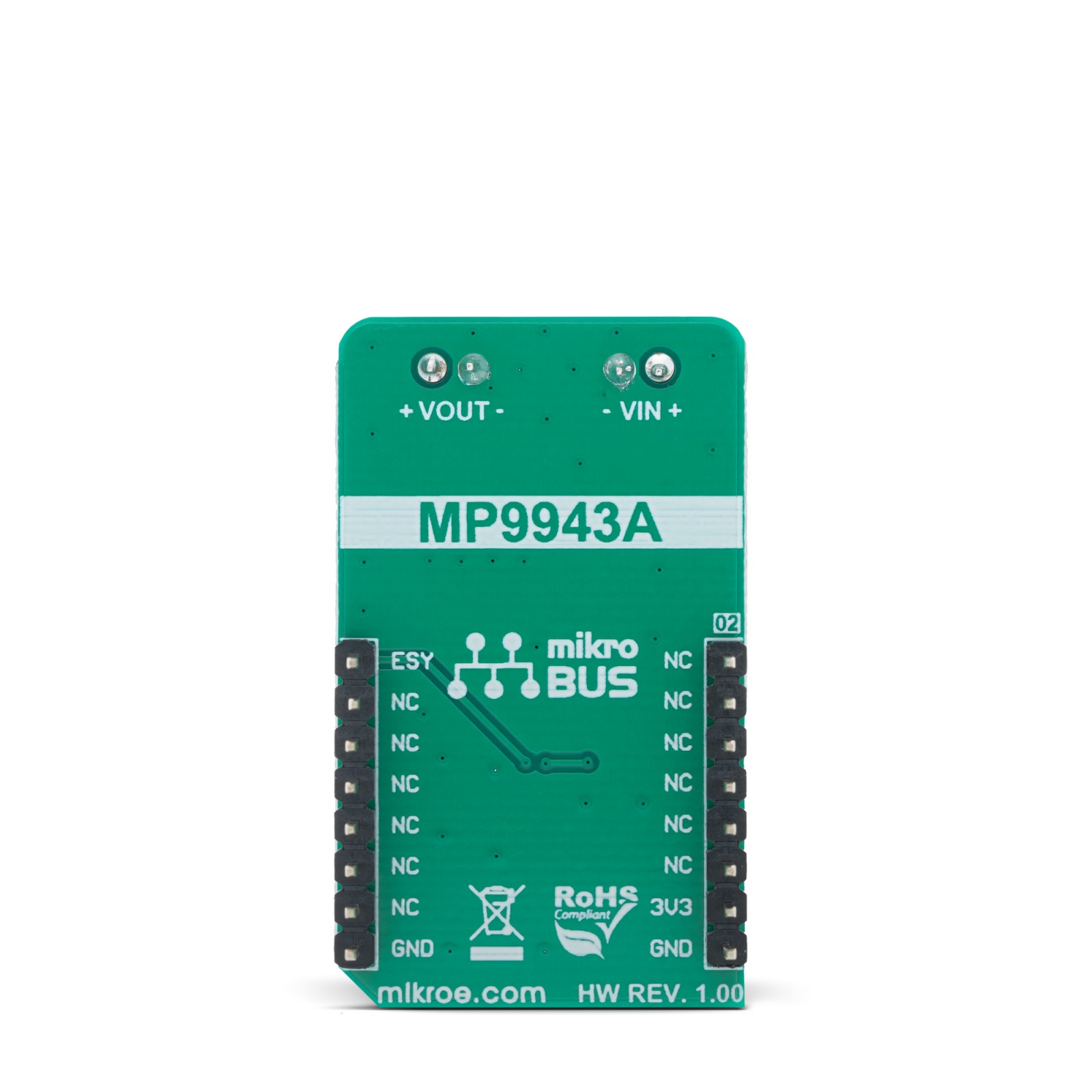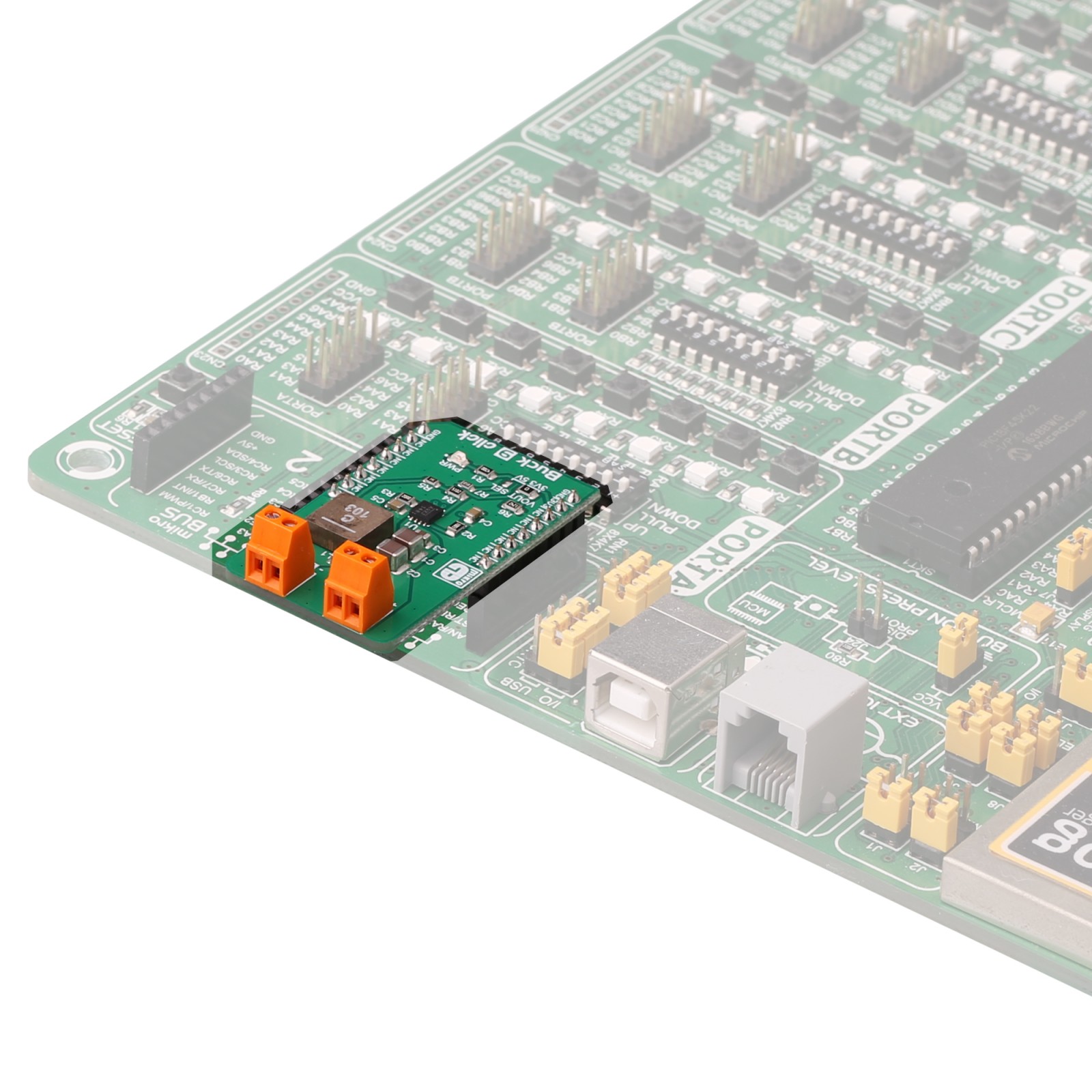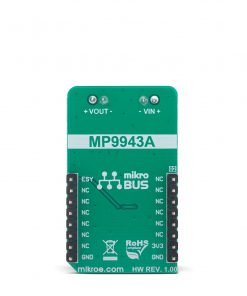Buck 9 Click
R460.00 ex. VAT
Buck 9 Click is a compact add-on board that contains a step-down converter that provides a highly regulated output voltage derived from the connected power source, rated from 4V to 36V. This board features the MP9943, a high-efficiency 3A peak synchronous step-down converter with Power Good from Monolithic Power Systems (MPS). The regulated output voltage between 3.3V and 5V can be selected, which is most commonly used in many embedded designs. The MP9943 is very reliable, offering over-current and under-voltage protection and a thermal shutdown. This Click board™ makes the perfect solution for the development of distributed power supply units (PSUs), wall transformer regulators, single board systems, general points of load, and similar applications that require regulated 3.3V or 5V power supply.
Buck 9 Click is supported by a mikroSDK compliant library, which includes functions that simplify software development. This Click board™ comes as a fully tested product, ready to be used on a system equipped with the mikroBUS™ socket.
Stock: Lead-time applicable.
| 5+ | R437.00 |
| 10+ | R414.00 |
| 15+ | R391.00 |
| 20+ | R376.28 |

